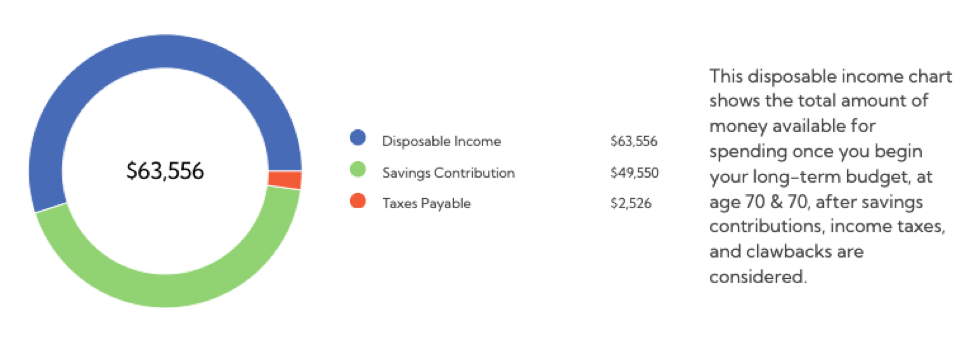
![]() Discover the transformative power of financial independence as industry leaders reveal how it can redefine success and enhance mental health. This article delves into the pivotal role of autonomy over time, the serenity that comes with automating finances, and the decreased stress from a strategic career pivot. Gain exclusive insights from authorities in the field on how saying no, embracing failure, and prioritizing family can lead to a life of fulfillment and stability.
Discover the transformative power of financial independence as industry leaders reveal how it can redefine success and enhance mental health. This article delves into the pivotal role of autonomy over time, the serenity that comes with automating finances, and the decreased stress from a strategic career pivot. Gain exclusive insights from authorities in the field on how saying no, embracing failure, and prioritizing family can lead to a life of fulfillment and stability.
- Success Means Control Over Time
- Automating Finances Brings Peace
- Switch to Consulting Reduces Stress
- Freedom to Design My Life
- Saying No Reduces Stress
- Freedom to Pursue Joyful Opportunities
- Control Over Time and Decisions
- Family Time Over Career Goals
- Focus on Long-Term Stability
- Monetization Strategy Brings Happiness
- Failures as Stepping Stones
Success means Control over Time
At the start of my career, I was obsessed with proving myself. I took on every case, worked ridiculous hours, and measured success by the number of wins I had under my belt. I thought the more I worked, the more successful I would be. But eventually, I hit a point where I was financially comfortable, and I realized I was still just as stressed as when I started. That was when I began prioritizing Financial Independence, and my definition of success completely changed. In the present time, I see success as having control over my time and my future.
A great example of this shift was when I started making decisions that were not just about revenue but about sustainability. I turned down high-stress cases that were not worth the mental drain, hired more attorneys to distribute the workload, and focused on building a firm that could function without me handling every single detail. That shift meant I no longer felt like I had to be on call 24/7, and my stress levels dropped dramatically. — Gordon Hirsch, Founder and Managing Attorney, Hirsch Law Group
Automating Finances brings Peace
When I started my career, I defined success by wealth and status-what I could buy and show off. I believed the more I had, the more successful I’d be. But when I shifted my focus to Financial Independence, everything changed. I realized that true success isn’t about accumulating things; it’s about having peace of mind and long-term security.
A turning point for me was automating my savings and investments. Before that, I was constantly stressed about money. Once I set everything to run automatically, I no longer had to worry. That simple change gave me mental space, allowing me to live freely without financial anxiety. Now, success is about feeling in control of my future. This shift has significantly improved my mental health, bringing me a sense of calm I never had before. — Brian Staver, CEO, Net Pay Advance
Switch to Consulting reduces Stress
I used to define success almost exclusively in terms of career milestones, like job titles, salary increases, or the prestige of my workplace. After I started focusing on Financial Independence, I began measuring success by how much control I had over my time and decisions, rather than by external markers. This shift significantly reduced my stress levels because I no longer felt tied to an intense “always-on” mentality just to climb the corporate ladder.
Once I established multiple income streams and built a solid emergency fund, I felt empowered to switch to a part-time consulting role, which opened up space for personal pursuits, like volunteering and hobbies that I’d never made time for before. Having that buffer of financial stability made it easier to prioritize my well-being and mental health, rather than constantly chasing traditional measures of success. — Inge Von Aulock, Investor & Chief Financial Officer, Invested Mom
Freedom to Design my Life
Success used to mean chasing titles, climbing the corporate ladder, and hitting traditional milestones like bigger paychecks, promotions, and external validation.
But once I started prioritizing Financial Independence, my perspective shifted entirely. Now, success is not about how much I earn but how much freedom I have to design my life on my terms.
Instead of measuring success by status or salary, I now define it by:
- Time freedom: Having control over how I spend my days.
- Choice and flexibility: Not being tied to a paycheck or forced into decisions based on financial constraints.
- Peace of mind: Knowing I have a safety net that allows me to take risks and say no to things that don’t align with my values.
Letting go of the pressure to constantly “achieve more” has been a huge relief.
Before, I felt trapped in an endless cycle of stress, overworking, and burnout, thinking that success meant sacrificing my personal well-being. Now, I feel more grounded, in control, and mentally at peace because my goals align with what truly matters to me.
A few years ago, I would have never considered stepping away from a high-paying job, fearing financial insecurity. But after working toward Financial Independence, I had the freedom to turn down a promotion that would have required longer hours and more stress.
Instead, I chose to focus on projects that align with my passions, knowing that my financial foundation gave me that choice.
The result? Less stress, more fulfillment, and a life I genuinely enjoy living.
Prioritizing financial independence has taught me that success is not about accumulating wealth but about having the freedom to live on your own terms. And that shift has made all the difference in my mental well-being. — Chinyelu Karibi-Whyte, Self-Care, Mindfulness & Resilience Advocate, Pheel Pretty
Saying “No” reduces Stress
When I first started in real estate, success was all about numbers: closing deals, growing revenue, and hitting milestones. I measured everything in dollar signs and transactions. But as I gained financial independence, my perspective shifted. Success became less about accumulation and more about impact-on my team, community, and well-being.
One of the biggest changes was learning to say no. Early in my career, I took on every client, every opportunity, afraid that turning something down meant losing ground. But once I reached a place where I wasn’t financially desperate for the next deal, I could be more selective. I could focus on working with people who aligned with my values and on projects that truly excited me. That shift reduced my stress dramatically. Instead of constantly feeling pressured to chase, I started making strategic and fulfilling decisions.
A clear example of this is Pepine Gives, my nonprofit focused on helping at-risk families. Years ago, I wouldn’t have had the bandwidth to pour energy into something like this because I was too busy trying to build stability. Now, I can invest time and resources into causes that matter because I’m not in survival mode. And that has brought me a fulfillment that no commission check ever could.
Financial Independence hasn’t made me work less: it’s made me work differently. My business is stronger because my priorities are clearer, and my mental health is better because I’m no longer tied to a definition of success that’s purely financial. Instead, success is about creating lasting change, lifting others up, and building a legacy beyond real estate. — Betsy Pepine, Owner and Real Estate Broker, Pepine Realty
Freedom to Pursue Joyful Opportunities
Success used to mean chasing milestones that felt like they were chosen for me: a high-paying job, owning the latest gadgets, or even maintaining a certain image of “having it all together.” Financial Independence rewired that definition entirely. Now, success isn’t about accumulation: it’s about freedom. It’s the ability to say “no” to things that don’t align with my values and “yes” to opportunities that spark joy or growth, even if they don’t come with a paycheck attached.
One example: I turned down a promotion that would’ve come with a significant pay bump because it demanded longer hours and constant availability. Ten years ago, I would’ve felt like I was throwing away an opportunity. But prioritizing financial independence allowed me to see it for what it was: a trade-off that would’ve cost me my time, health, and peace of mind. Instead, I used that time to start freelancing in a field I love, and ironically, I ended up replacing that lost income in a way that didn’t burn me out. Continue Reading…








